[HTML] [Images]
Line Art
Gif is very efficient for line art
or poster work where there are large areas of flat colour,
black or white.
If we convert the colour pictures
of the Polly Woodside to black and white,
we notice a tiny decrease in file size for gif
and a moderate decrease for jpg;
the black and white images still have 256 grey-scale levels after all.
Converting them into artificial line-art
by edge-detection and thresholding the grey-scale
level at a suitable value
we get a large decrease in file size for gif
and an increase for 75% jpg:
| 320x320 Images
(Polly Woodside) |
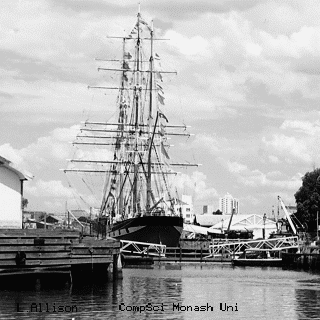
gif, 56K
| 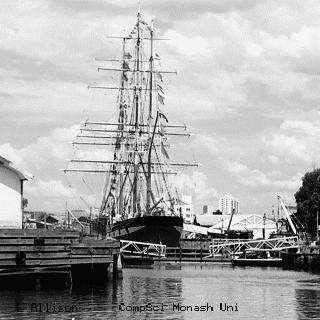
jpg 75%, 20K
|
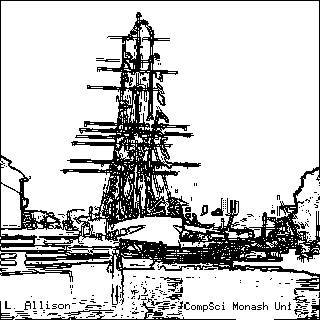
gif, 5K
|
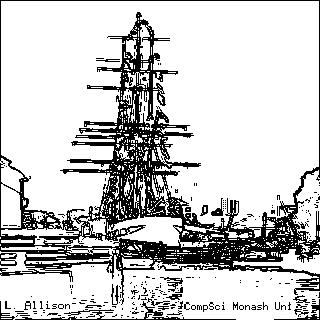
jpg 75%, 30K
|
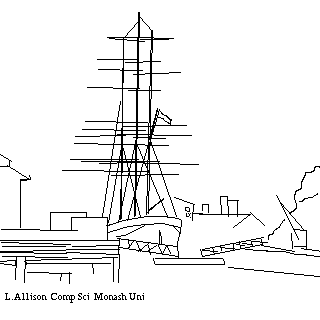
gif 3K
|
Of course the last two images above are not of acceptable quality for
an HTML page about the ship; they are only given as examples
of artificial line drawings to illustrate gif's efficiency in that
kind of application.
Genuine line art
(and I only claim the "line", not the "art")
typically has far less detail and thus
gives even smaller file sizes in gif format: 3K (left).
|
The efficiency of gif for line art and poster art comes from two factors.
Firstly, fewer bits are needed to state the number of a colour table entry:
1 bit per pixel for 2-colour images,
2 bits per pixel for 4-colour images, etc.
Secondly, this kind of image has large runs of flat colour
and these runs compress well under the gif model.
[Images]
Copyright ©
L.Allison
Department of Computer Science, Monash University, Australia 3168
/ 1997




